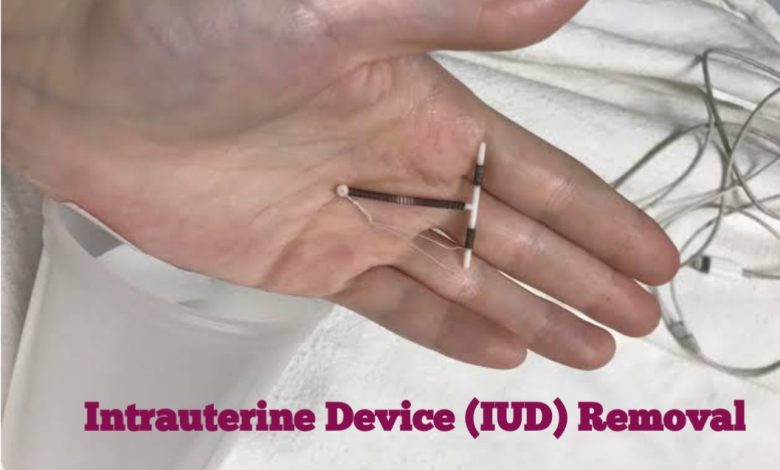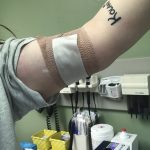Does It Hurt To Take Out an IUD?

An intrauterine device (IUD) is a small, T-shaped contraceptive device that is inserted into a woman’s uterus to provide long-term birth control. IUDs are highly effective at preventing pregnancy and offer a convenient and reversible method of contraception. There are two main types of IUDs: hormonal IUDs and copper IUDs, each with its own mechanism of action.
1. Hormonal IUD: This type of IUD releases a synthetic hormone, typically levonorgestrel, directly into the uterus. The hormone primarily works by thickening cervical mucus, making it difficult for sperm to reach and fertilize an egg. Additionally, it may affect the uterine lining, making it less receptive to implantation. Hormonal IUDs can prevent pregnancy for several years, depending on the specific brand and type.
2. Copper IUD: The copper IUD, also known as a non-hormonal IUD, is wrapped with copper wire. Copper has a spermicidal effect and creates an environment within the uterus that is hostile to sperm, preventing fertilization. Copper IUDs can provide contraception for up to 10 years, depending on the brand.
Key features and benefits of IUDs include their long-lasting effectiveness, convenience (once inserted, no daily action is required), high contraceptive efficacy, and reversibility (they can be removed at any time if a person wishes to conceive). IUDs are typically inserted by a healthcare provider during a brief office visit, and they offer a reliable and discreet form of birth control.
Intrauterine devices (IUDs) have gained immense popularity as a contraceptive choice for women owing to their impressive effectiveness and unparalleled convenience. Unlike birth control methods that require daily attention or frequent medical appointments, IUDs offer a set-it-and-forget-it solution. However, as with any form of contraception, there may come a point when a woman decides it’s time to part ways with her IUD. Whether for family planning purposes or the desire to explore alternative birth control options, the process of IUD removal is a common occurrence. An oft-asked question during this time is whether it hurts to have an IUD removed.
In this article, we will delve into the intricacies of the IUD removal process, what to anticipate during the procedure, and factors that can influence the level of discomfort.
The IUD Removal Process
The removal of an IUD is typically a straightforward and relatively quick procedure that is performed by a healthcare provider, such as a gynecologist or nurse practitioner. Here’s a step-by-step overview of the IUD removal process:
1. Preparation: Before removal, the healthcare provider will discuss the procedure with the patient, explain any potential discomfort, and answer any questions. They may also perform a pelvic exam to locate the IUD’s strings.
2. Positioning: The patient will be asked to lie down on an examination table, similar to a pelvic exam or Pap smear.
3. Visualization: The healthcare provider will use a speculum to gently open the vaginal canal and visualize the IUD’s strings. In some cases, the strings may not be visible, which could make removal slightly more challenging but not necessarily more painful.
4. Grasping the IUD: Using specialized instruments, the healthcare provider will grasp the IUD’s strings and gently pull it out. The removal should take just a few seconds.
Does IUD Removal Hurt?
The experience of IUD removal can vary from person to person. For many women, the procedure is relatively painless and is often described as feeling like a brief, mild cramp or discomfort. Some factors that can influence the level of discomfort during removal include:
1. Pain Tolerance: Individuals have different pain thresholds, and what one person may find mildly uncomfortable, another may perceive as painful. Communicating any concerns about pain with the healthcare provider is essential.
2. Timing: The timing of IUD removal within the menstrual cycle can impact discomfort. Some women prefer to have the IUD removed during their period when the cervix is naturally more open, which may make removal easier and less uncomfortable.
3. Experience of the Healthcare Provider: An experienced healthcare provider is generally more skilled at performing a quick and gentle IUD removal, minimizing discomfort.
4. Cervical Position: The position of the cervix can also influence the ease of removal. In some cases, if the cervix is difficult to access, the healthcare provider may need to take additional steps to make removal more comfortable.
Post-Removal Considerations
After the IUD is removed, most women can expect any discomfort or cramping to subside quickly. It is normal to experience some spotting or light bleeding after removal, but this should also resolve within a short time.
Conclusion
While the experience of IUD removal can vary, it is generally not considered to be a highly painful or traumatic procedure. Most women find it to be a manageable and relatively quick process. If you have concerns or specific questions about IUD removal, it’s always a good idea to discuss them with your healthcare provider, who can provide personalized guidance and address any potential discomfort or anxiety you may have. Ultimately, the decision to remove an IUD should be based on your individual contraceptive needs and family planning goals, with the understanding that the procedure is a routine and generally well-tolerated part of the IUD journey.





